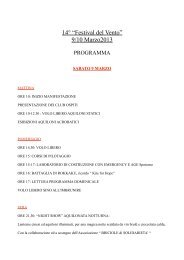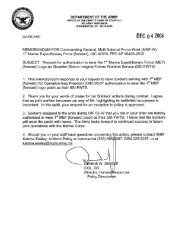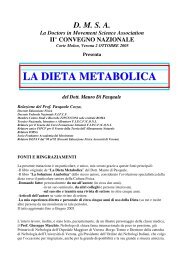Science vs. religion : what scientists really think - File PDF
Science vs. religion : what scientists really think - File PDF
Science vs. religion : what scientists really think - File PDF
Create successful ePaper yourself
Turn your PDF publications into a flip-book with our unique Google optimized e-Paper software.
NOTES TO PAGES 51–56195N=1217) equals total spiritual (69.63%). For a discussion of the overlap between<strong>religion</strong> and spirituality, see Underwood and Teresi, “The Daily Spiritual Experienceand Scale.” In addition to works of sociology, extensive literature has been publishedon the role of spirituality in medicine. For an overview, see Messikomer and Craemer,“The Spirituality of Academic Physicians” ; Puchalski and Larson, “Developing Curriculain Spirituality and Medicine” ; and Robinson et al., “Matters of Spirituality at the Endof Life in the Pediatric Intensive Care Unit.”3. Wuthnow, Loose Connections , 22–23 .4. See Bellah et al., Habits of the Heart . But see also Wuthnow, Loose Connections , for adifferent view of the implications that the new spirituality has for American religious life.5. See, for example, the activities of the Center for Contemplative Mind in Societyat www.contemplativemind.org . See also Halpern, Making Waves and Riding theCurrents .6. See Bellah et al., Habits of the Heart . In addition, see Dillon, Wink et al., “Is SpiritualityDetrimental to Generativity?,” which argues that spirituality—in comparison totraditional <strong>religion</strong>—can lead to self-preoccupation. In contrast, see Lambert, “Religionin Modernity as a New Axial Age,” for a discussion of how spirituality might actually beevidence of a renewed religious spirit in American society.7. The comparisons with the general population are from General Social Survey1998 and are significant at the .0001 level.8. See Geertz, The Interpretation of Cultures .9. Soc 28, conducted January 25, 2006.10. Chem 15, conducted October 11, 2005.11. Of the 275 qualitative interviews completed, about 23 percent at some point duringthe interview specifically described themselves as not spiritual or uninterested inspirituality; 22 percent did not mention spirituality; and 14 percent offered descriptionsthat could not be coded into a specific category.12. See, for example, Barbour, Issues in <strong>Science</strong> and Religion . There is much debateover how different <strong>religion</strong> is from spirituality and about whether spirituality is a formof <strong>religion</strong>. See Bender, “Religion and Spirituality,” for an excellent discussion of thistopic. Bender argues that many of our definitions of <strong>religion</strong> and spirituality come fromthe way that surveys are conceptualized. Discussing studies of spirituality on collegecampuses, she says that in these studies “spirituality is private, emergent, emotional,and individual, and <strong>religion</strong> is corporate, public, and stable.” The data analyzed in thisbook hopefully avoid this pitfall of conceptualization. They come both from in-depthinterviews with respondents (where they defined <strong>religion</strong> and spirituality for themselves)and my survey of <strong>scientists</strong>, where they were asked whether they would describethemselves as a spiritual person and asked whether they participate in a variety of spiritualpractices, such as meditation.13. See www.washingtonpost.com/wp-dyn/content/article/2005/11/12/AR2005111201080.html for a Washington Post article about the event.14. Here, as in Chapter 2, we see a departure by <strong>scientists</strong> from the Mertonian modelthat science is ruled by the objectivity of the collective rather than the subjectivity of the
















